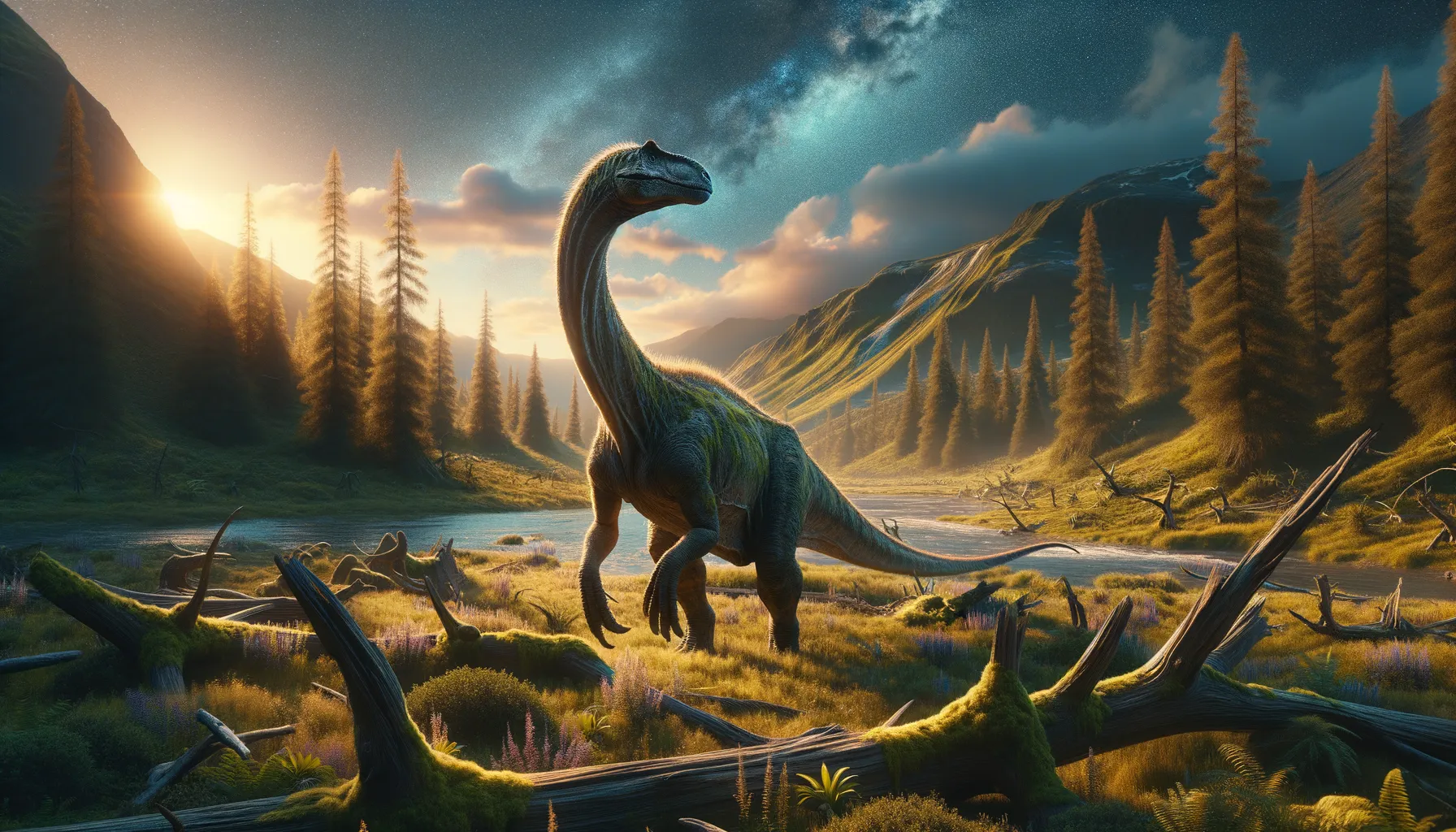
Erketu
Extending the neck of discovery.
Period
Cretaceous
Length
Approximately 20 meters long.
Height
Stood about 4 meters tall at the shoulder.
Weight
Estimated to weigh around 20,000 to 30,000 kg.
Erketu was a long-necked dinosaur, part of the sauropod group, which lived during the Cretaceous period. Its extraordinary neck length set it apart from other contemporaries, allowing it to reach vegetation other dinosaurs couldn't. Found in Mongolia, this dinosaur provided valuable insights into the diversity and adaptability of sauropods during its time. Its discovery added another piece to the global puzzle of dinosaur evolution.
Diet
Erketu was a herbivore, feeding primarily on high-growing vegetation. Its long neck allowed it to graze from trees and other plants that were out of reach for many other herbivores of its time.
Hunting
Erketu did not hunt as it was a herbivore. Instead, it spent its days foraging for foliage and other plant material. Its food gathering strategy involved reaching higher vegetation with its long neck.
Environmental challenges
The environment posed challenges with varying climates and competition for food sources. Maintaining such a large body size required massive quantities of plant material. Shifts in vegetation due to climate changes could impact food availability significantly. Predators might have targeted juveniles, necessitating protective strategies.
Speed
Slow-moving due to its large size.
Lifespan
Likely lived several decades.
First discovery
Discovered in Mongolia in 2006.
Fun Facts
- Erketu was a long-necked dinosaur that lived in what is now Mongolia during the Late Cretaceous period.
- Its neck was so long that it made up more than half of its total body length, which is quite unique among dinosaurs.
- Erketu's name comes from the Mongolian god of strength, reflecting its powerful presence.
- This dinosaur is part of the group called 'sauropods,' known for their massive size and long necks and tails.
- Scientists discovered its fossils in the Gobi Desert, a place famous for many other dinosaur finds.
- Erketu is believed to have fed on plants, using its long neck to reach high or distant vegetation.
- Despite its enormous neck, Erketu was likely a peaceful giant, moving slowly and relying on its size for protection.
Growth and Development
Erketu, like other sauropods, hatched from eggs and took many years to reach maturity. Growth was likely rapid in early stages to reduce vulnerability to predators. Its long neck would have developed over time, allowing greater access to food with age.
Habitat
Erketu inhabited forested regions and open plains of ancient Mongolia. It thrived in ecosystems where tall coniferous trees and cycads were abundant. These environments provided ample resources for its herbivorous diet, while also supporting a diverse range of other species.
Interaction with other species
Being a large herbivore, Erketu could have lived in herds to enhance protection against predators. Its presence would have influenced the ecosystem by acting as a primary consumer of vegetation. Competition with other large herbivores for food could have shaped its behavior and movement patterns.
Natural lifespan
Its natural lifespan was likely similar to other sauropods, potentially reaching 70-80 years.
Reproduction
Erketu, like other sauropods, likely laid eggs in nests. Such reproductive strategies required finding suitable nesting grounds with ample vegetation for the hatchlings' growth. Parental care was probably minimal once the eggs were laid, with survival depending on growth rate and predator avoidance.
Social behaviour
Erketu might have exhibited social behavior characteristic of sauropods, such as forming groups or herds for protective advantages. Social interactions would have played a role in migration, finding food sources, and avoiding predators. Communication could have been achieved through a range of vocalizations or body movements.
Fossil locations
Fossils of Erketu have been found primarily in Mongolia. These fossils provided crucial insights into its anatomy and lifestyle. The initial discovery in the Gobi Desert opened new avenues for understanding sauropod diversity in Asia.
